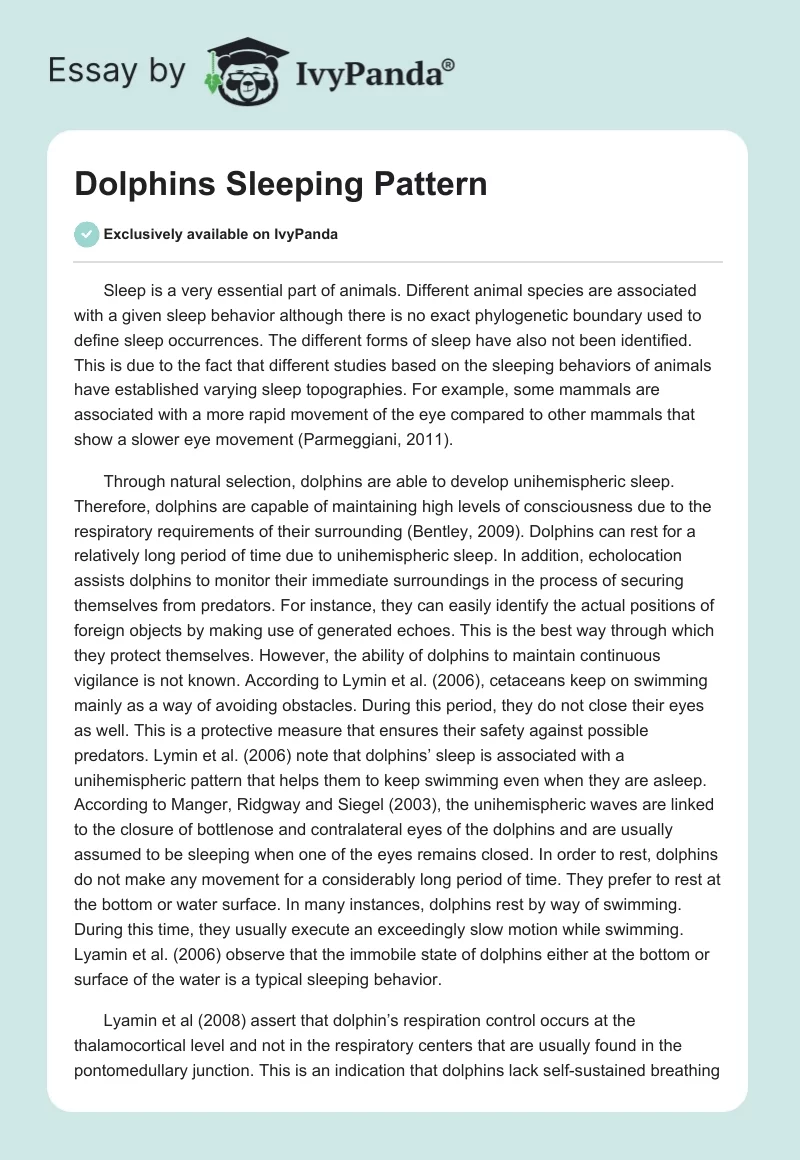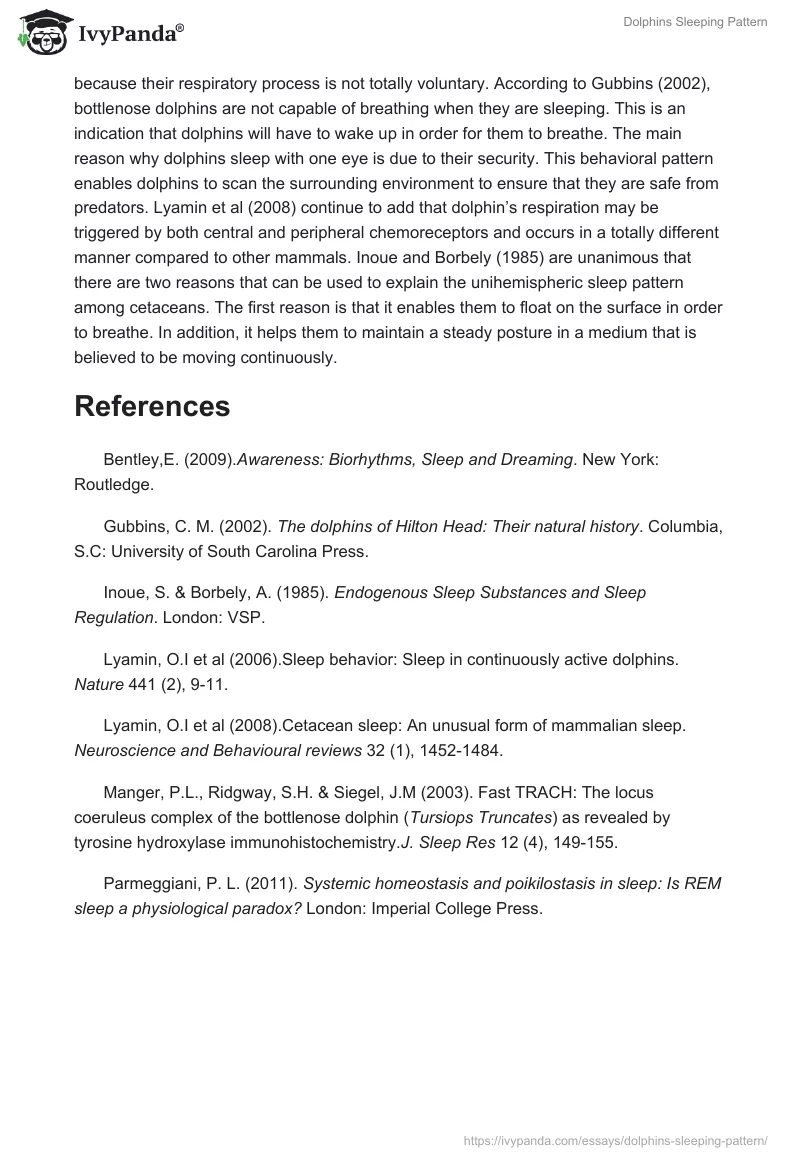Sleep is a very essential part of animals. Different animal species are associated with a given sleep behavior although there is no exact phylogenetic boundary used to define sleep occurrences. The different forms of sleep have also not been identified. This is due to the fact that different studies based on the sleeping behaviors of animals have established varying sleep topographies. For example, some mammals are associated with a more rapid movement of the eye compared to other mammals that show a slower eye movement (Parmeggiani, 2011).
Through natural selection, dolphins are able to develop unihemispheric sleep. Therefore, dolphins are capable of maintaining high levels of consciousness due to the respiratory requirements of their surrounding (Bentley, 2009). Dolphins can rest for a relatively long period of time due to unihemispheric sleep. In addition, echolocation assists dolphins to monitor their immediate surroundings in the process of securing themselves from predators. For instance, they can easily identify the actual positions of foreign objects by making use of generated echoes. This is the best way through which they protect themselves. However, the ability of dolphins to maintain continuous vigilance is not known. According to Lymin et al. (2006), cetaceans keep on swimming mainly as a way of avoiding obstacles. During this period, they do not close their eyes as well. This is a protective measure that ensures their safety against possible predators. Lymin et al. (2006) note that dolphins’ sleep is associated with a unihemispheric pattern that helps them to keep swimming even when they are asleep. According to Manger, Ridgway and Siegel (2003), the unihemispheric waves are linked to the closure of bottlenose and contralateral eyes of the dolphins and are usually assumed to be sleeping when one of the eyes remains closed. In order to rest, dolphins do not make any movement for a considerably long period of time. They prefer to rest at the bottom or water surface. In many instances, dolphins rest by way of swimming. During this time, they usually execute an exceedingly slow motion while swimming. Lyamin et al. (2006) observe that the immobile state of dolphins either at the bottom or surface of the water is a typical sleeping behavior.
Lyamin et al (2008) assert that dolphin’s respiration control occurs at the thalamocortical level and not in the respiratory centers that are usually found in the pontomedullary junction. This is an indication that dolphins lack self-sustained breathing because their respiratory process is not totally voluntary. According to Gubbins (2002), bottlenose dolphins are not capable of breathing when they are sleeping. This is an indication that dolphins will have to wake up in order for them to breathe. The main reason why dolphins sleep with one eye is due to their security. This behavioral pattern enables dolphins to scan the surrounding environment to ensure that they are safe from predators. Lyamin et al (2008) continue to add that dolphin’s respiration may be triggered by both central and peripheral chemoreceptors and occurs in a totally different manner compared to other mammals. Inoue and Borbely (1985) are unanimous that there are two reasons that can be used to explain the unihemispheric sleep pattern among cetaceans. The first reason is that it enables them to float on the surface in order to breathe. In addition, it helps them to maintain a steady posture in a medium that is believed to be moving continuously.
References
Bentley,E. (2009).Awareness: Biorhythms, Sleep and Dreaming. New York: Routledge.
Gubbins, C. M. (2002). The dolphins of Hilton Head: Their natural history. Columbia, S.C: University of South Carolina Press.
Inoue, S. & Borbely, A. (1985). Endogenous Sleep Substances and Sleep Regulation. London: VSP.
Lyamin, O.I et al (2006).Sleep behavior: Sleep in continuously active dolphins. Nature 441 (2), 9-11.
Lyamin, O.I et al (2008).Cetacean sleep: An unusual form of mammalian sleep. Neuroscience and Behavioural reviews 32 (1), 1452-1484.
Manger, P.L., Ridgway, S.H. & Siegel, J.M (2003). Fast TRACH: The locus coeruleus complex of the bottlenose dolphin (Tursiops Truncates) as revealed by tyrosine hydroxylase immunohistochemistry.J. Sleep Res 12 (4), 149-155.
Parmeggiani, P. L. (2011). Systemic homeostasis and poikilostasis in sleep: Is REM sleep a physiological paradox? London: Imperial College Press.


